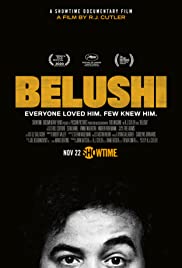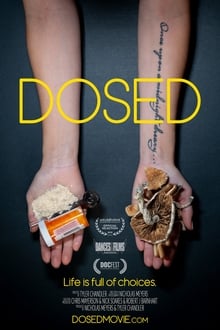
Why the Spray is a collection of stories about the identities and expressions of five Miami graffiti artists. To understand “why” they “spray,” I infuse cinematography, archival footage, photography, and artistry to provide unique insight into the psychology of graffiti artists.
You May Also Like

Serving life in prison for murdering their parents, Lyle and Erik Menendez speak out in this documentary explaining the shocking crime and ensuring trials.

Using previously unheard audiotapes recorded shortly after John Belushi’s death, director R.J. Cutler’s documentary feature examines the too-short life of the once-in-a-generation talent who captured the hearts and funny bones of devoted audiences.

In 1997, 17-year-old suburban Buenos Aires filmmakers Pablo Parés and Hernan Sáez pooled $450 to co-write/produce/direct and star in a shot-on-VHS zombie epic of such flesh-ripping, gore-spewing greatness that it instantly drew global cult acclaim and redefined the possibilities of extreme DIY horror. Over the next 20 years, Parés, Sáez and their friends would create two increasingly ambitious – and equally brilliant – viscera-soaked sequels (and several short films) that made them “Argentinian George Romeros who’ve built a small empire of gore flicks”

When Marvin Hamlisch passed away in August 2012 the worlds of music, theatre and cinema lost a talent the likes of which we may never see again. Seemingly destined for greatness, Hamlisch was accepted into New York’s Juilliard School as a 6-year-old musical prodigy and rapidly developed into a phenomenon. With instantly classic hits ‘The Way We Were’ and ‘Nobody Does It Better’ and scores for Hollywood films such as The Swimmer, The Sting and Sophie’s Choice and the Broadway juggernaut A Chorus Line; Hamlisch became the go-to composer for film and Broadway producers and a prominent presence on the international Concert Hall circuit. His streak was staggering, vast, unprecedented and glorious, by the age of 31 Hamlisch had won 4 Grammys, an Emmy, 3 Oscars, a Tony and a Pulitzer prize: success that burned so bright, it proved impossible to match.

The documentary follows one woman’s quest to overcome anxiety, depression, and opioid addiction through the use of psychedelic medicines.

Based on real near-death experiences, the afterlife is explored with the guidance of New York Times bestselling authors, medical experts, scientists and survivors who shed a light on what awaits us.

This film follows several independent game developers (Jason Rohrer, thatgamecompany, Douglas Wilson, Zach Gage, Aledander Bruce) examining why they make digital games. The film delves into their creativity and explores some of their thinking and design strategies. Game developers operate in terrain that demands both programming logic and aesthetic quality. The work is hard, however that’s what they want to do. The film explores how the developers go deeper into the notion of entertainment and discovery.

A film about why you should join a club—and why the fate of America may depend on it. Follow the story of America’s civic unraveling through the work of Robert Putnam, whose legendary Bowling Alone findings light a path out of our democracy’s crisis.

Documentary about humans dealing with changing technology, the basic concepts of communication, cinema, and Akerman’s mother, seen in her Brussels apartment.

Spanish footballers come together for the first time to relive the turbulent 2023 Women’s World Cup and the kiss that overshadowed their victory.

A look at the special relationship between Nirvana and the UK on the 30th anniversary of their seminal album Nevermind, including the role Britain played in paving the way for their success.

Georg Baselitz: Making Art after Auschwitz and Dresden explores the artist’s brilliant career through his 2007 retrospective exhibition at London’s Royal Academy of Arts. Accompanied by curator Norman Rosenthal, who first exhibited paintings by Baselitz in the early 1970’s, the artist discusses painting, sculpture and the trajectory of his work. The exhibit emphasizes Baselitz ability to create imagery that deals unflinchingly with his position as a post-war artist. In responding to contemporary experience and exploring his own painterly instincts, Baselitz creates symbols which reflect deep-rooted human dilemmas and concerns.